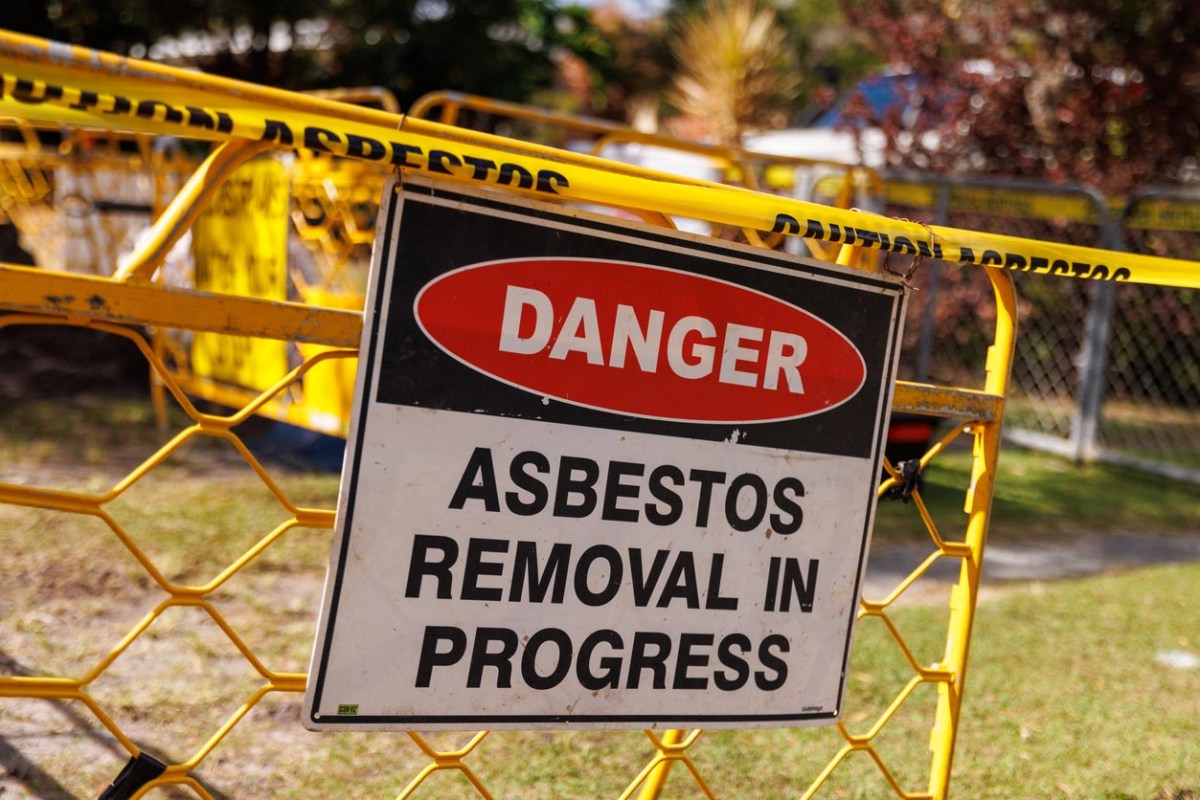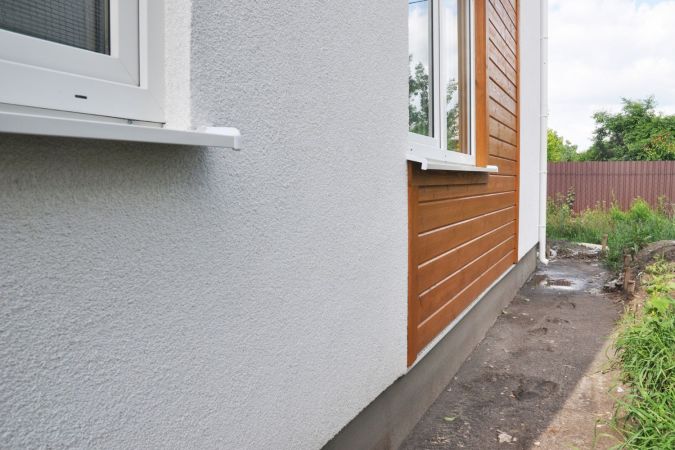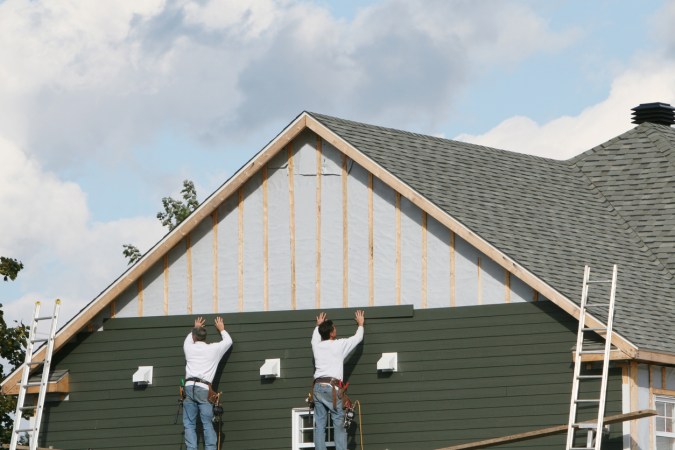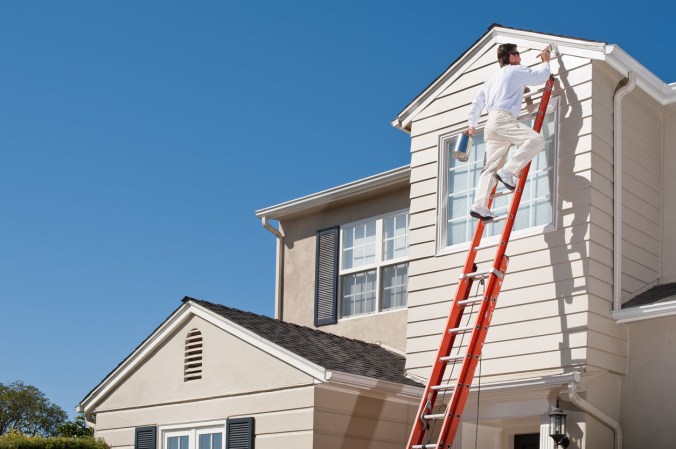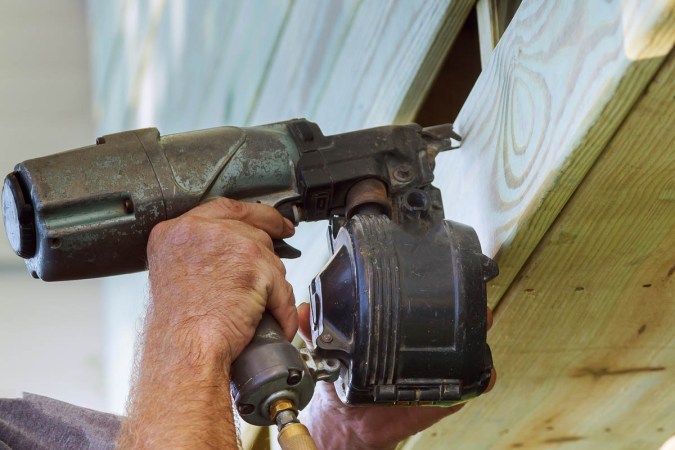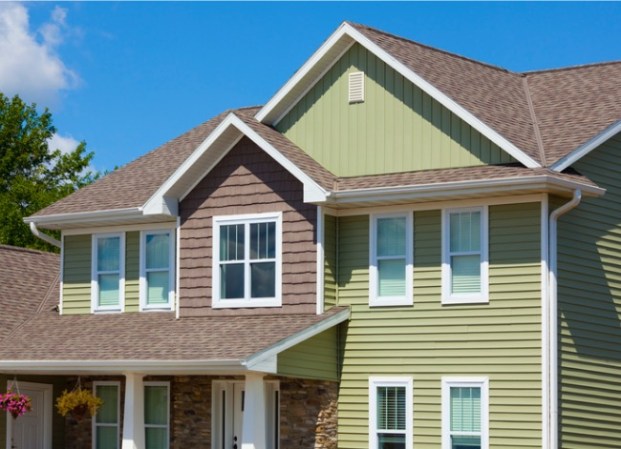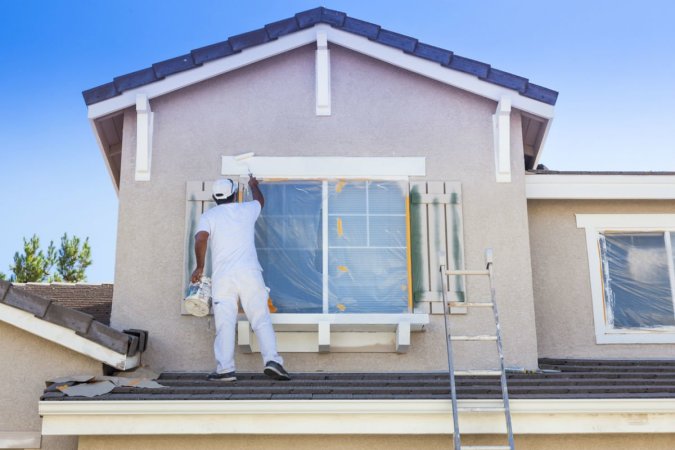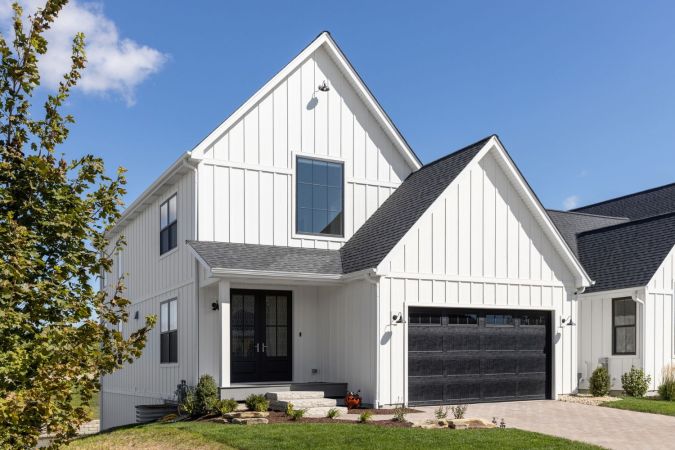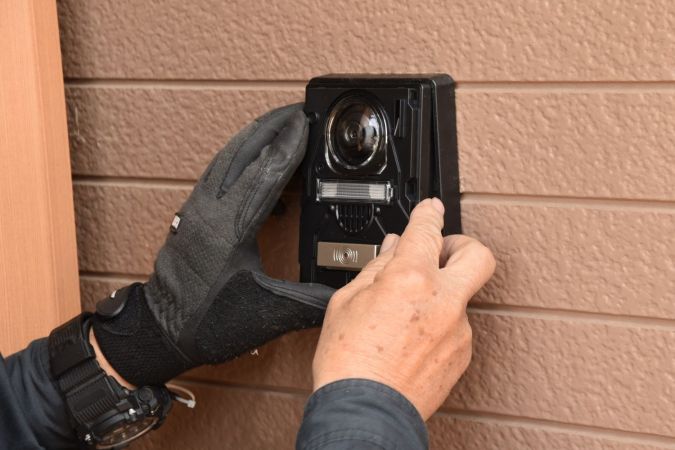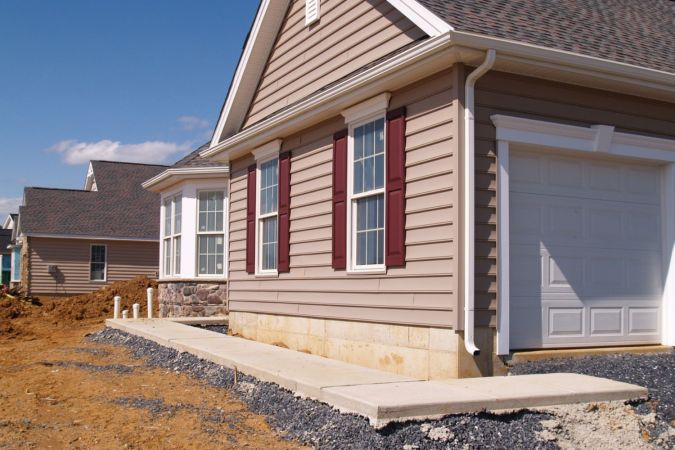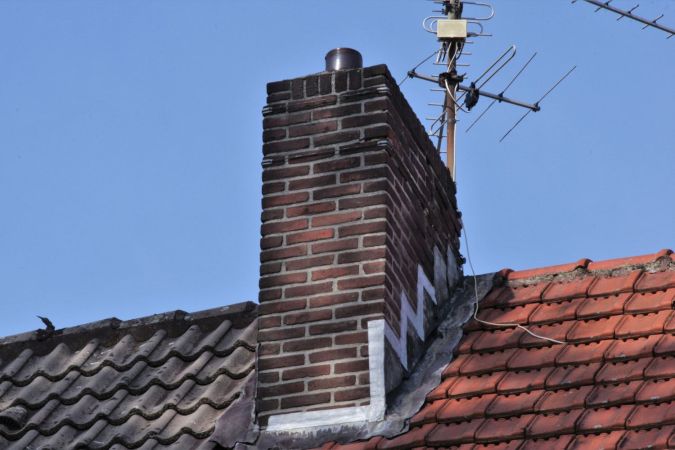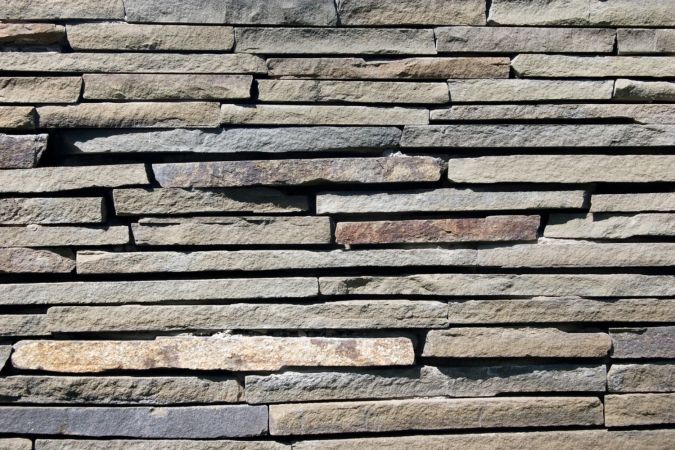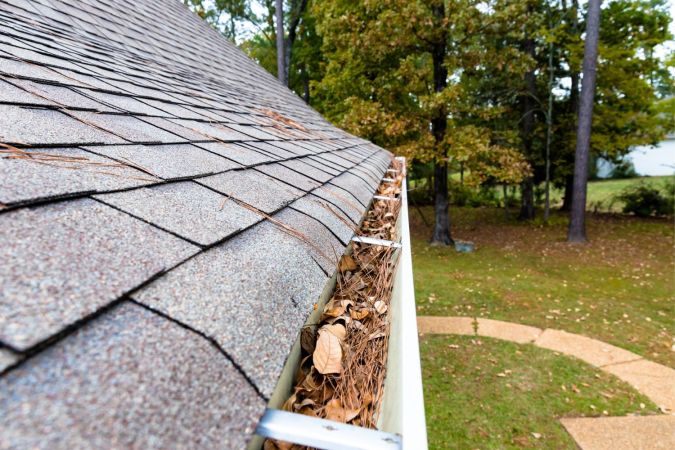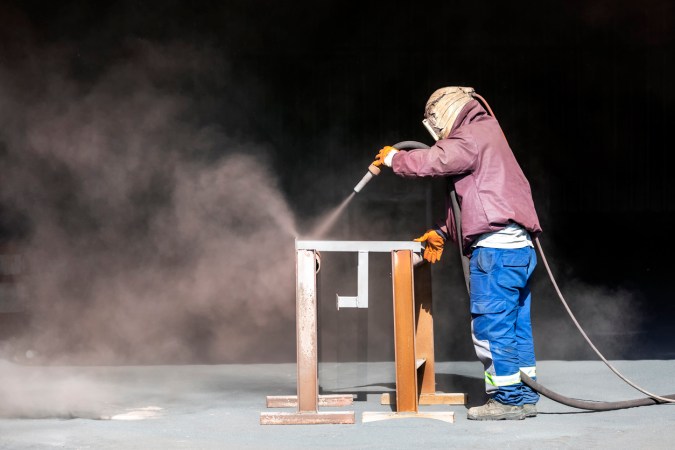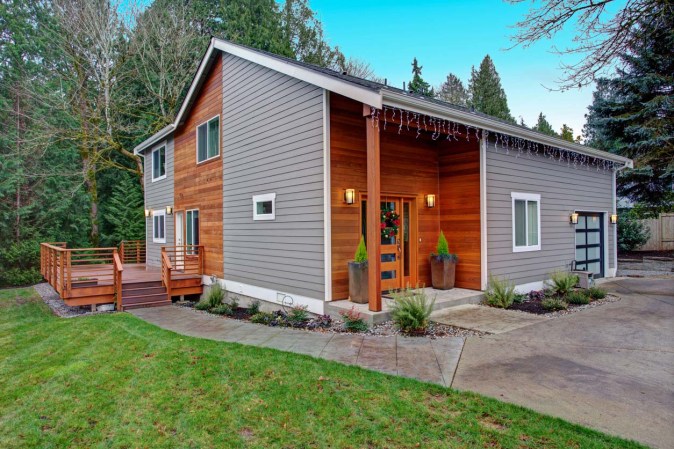We may earn revenue from the products available on this page and participate in affiliate programs. Learn More ›
Highlights
- The cost of asbestos siding removal averages $5,700, but a typical range is between $690 and $20,000.
- Some key factors that affect the total removal cost include the size of the area, type of asbestos, removal method, labor rates, and disposal fees.
- Homes that were built during or prior to the 1980s often have asbestos-containing components. Potential home buyers are more likely to purchase a home that does not contain asbestos over one that does
- Exposure to free-floating asbestos fibers is dangerous to humans and animals. The removal and disposal of asbestos materials is also highly regulated, so homeowners are advised to hire licensed asbestos removal professionals.
Historically valued for its strength, durability, and resistance to heat and corrosion, asbestos was commonly used in various construction materials. The word “asbestos” refers to a group of naturally occurring minerals composed of thin, fibrous crystals. Asbestos fibers can become airborne when materials containing asbestos are disturbed or damaged. It’s now understood that prolonged exposure to free-floating asbestos fibers can pose serious health risks.
“Asbestos exposure can lead to many long-term health risks, including mesothelioma, lung cancer, asbestosis, and more,” explains Sean Marchese, MS, RN—a registered nurse at The Mesothelioma Center at Asbestos.com with a background in oncology clinical trials. “Damaging or disturbing old asbestos-containing materials can quickly release asbestos fibers into the air. These fibers are invisible and odorless, detectable only by very sensitive equipment. When asbestos fibers are present in the air or dust, the risk of inhalation is high.”
Because of its hazardous nature, asbestos is now heavily regulated, restricted, or banned in many countries, and its removal and disposal must be handled by trained professionals following strict safety regulations. The cost of asbestos siding removal can vary depending on several factors.
According to Angi, the cost of asbestos removal averages between $690 and $20,000, but many homeowners will spend around $5,700. The final cost is influenced by the size of the property, the extent of asbestos contamination, and the location of the property. Asbestos siding removal cost may also include expenses for asbestos remediation and asbestos siding replacement.
Before starting any type of asbestos removal project, it’s important to consider the potential health risks and legal requirements. It’s also advisable to get quotes from several of the best asbestos removal companies to compare prices and services. Regardless of asbestos remediation cost, the investment is worth it to ensure the safety and well-being of homeowners, their families, and the environment.
Factors in Calculating Asbestos Siding Removal Cost
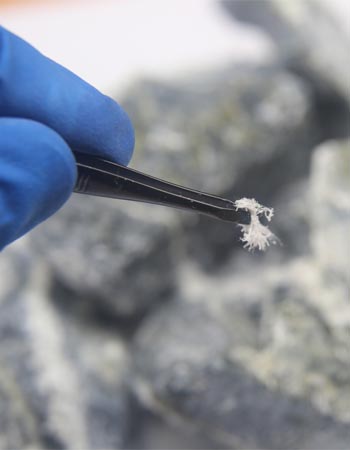
Calculating asbestos removal cost involves considering a few important factors. These include the size of the affected area, the type of asbestos present, the siding material, local labor rates, removal methods, and disposal fees. While the national average cost for asbestos siding removal is approximately $5,700, local averages can fluctuate due to variations in labor costs and disposal regulations. The wide range in costs can be attributed to the complexity of the removal process, the extent of contamination, the specific requirements of the local government, and environmental laws.
Area Size
More time, labor, and resources are typically required to remove asbestos siding from larger contaminated areas than for smaller areas. The asbestos removal price tends to increase with the size of the affected area, and removing asbestos siding costs approximately $150 per square foot. Contractors may need additional workers and equipment for larger or more complex projects, and this can contribute to higher overall expenses.
Asbestos Type
There are several types of asbestos minerals, including actinolite, amosite, anthophyllite, chrysotile, crocidolite, and tremolite. What does asbestos look like, though, and how can a professional decide how to safely remove it? Each type of asbestos has its own appearance and composition, which determines the type of safety precautions used during the removal process.
- Actinolite (white/gray/green). Actinolite asbestos, which can appear white, gray, or green, is one of the six recognized types of asbestos materials. It is less common than chrysotile (white asbestos), but it can still be found in various materials, including some types of siding, cement, sealants, and insulation. The presence of actinolite asbestos in siding can affect removal costs due to the specialized procedures needed for safe handling. Disposal methods for actinolite asbestos follow stricter regulations, which can increase the overall removal costs.
- Amosite (brown). Amosite asbestos, commonly referred to as brown asbestos, gained popularity in various industries for its heat resistance and durability. This led to frequent use in numerous construction materials, including some types of siding. What’s unusual about this type of asbestos is that it can pass through many HEPA-rated vacuums, which makes the removal even more expensive by 5 to 10 percent since specialized equipment is required for safe removal.
- Anthophyllite (yellow-brown). Anthophyllite asbestos, characterized by its yellow-brown color, is one of the less common types of asbestos minerals. It contains amphibole fibers, which are shorter and smaller than what’s found in other types of asbestos. The danger of inhaling these smaller fibers is that they can lodge deep within the lungs and cause many types of respiratory issues.
- Chrysotile (white). Chrysotile asbestos, often referred to as white asbestos, is the most common type of asbestos material. It has been used extensively in various construction materials, including siding. While it’s considered less toxic than other types of asbestos, it still poses significant health risks when disturbed. Typically, the cost to remove chrysotile asbestos is the lowest of all asbestos removal methods.
- Crocidolite (blue). Crocidolite asbestos, commonly known as blue asbestos, is considered the most dangerous type of asbestos. The presence of this type of asbestos in siding correlates with significantly increased removal costs due to its high toxicity. Crocidolite fibers are extremely brittle and easily released into the air when disturbed. Asbestos siding removal costs can increase by 5 percent when crocidolite asbestos is present.
- Tremolite (white to dark green). Tremolite asbestos is a type of asbestos mineral belonging to the amphibole group. It typically occurs as fibrous crystals and can vary in color from white to dark green. It’s commonly found in roofing tiles, insulation, and paint.
Siding Material
Asbestos has long been known as a hazardous substance that poses serious health risks. Many homeowners are faced with the challenge of removing asbestos siding from older homes. The type of siding material, whether it is asbestos brick, asbestos fiber cement siding, or asbestos stucco, can greatly influence the cost of removing asbestos siding.
Labor
The price a homeowner pays to remove asbestos siding can vary significantly depending on the location. Considering how labor-intensive asbestos removal can be, it’s no surprise that labor rates influence the overall cost. On average, the labor cost to remove asbestos siding is about $200 per hour per crew member, though some rates may be as low as $75 per hour. This can vary by geographic location, current demand, and local labor rates. In most cases, the labor fee is a separate charge in addition to the disposal, permit, and overhead fees, which can range between $800 and $1,500.
Removal Method
To get rid of asbestos siding safely and efficiently, it’s crucial to hire licensed and experienced asbestos removal contractors. They are trained to follow strict protocols and use specialized equipment to ensure the safe removal of asbestos. In addition, homeowners can choose to have the asbestos either removed or contained. Different removal methods vary by complexity, safety precautions, equipment requirements, and labor intensity, all of which can influence the final cost.
- Encapsulation. Contractors can apply a special sealant or coating to the asbestos-containing material to encapsulate and immobilize the dangerous fibers. If the siding is in good condition (doesn’t crumble or fall apart when touched), then encapsulation is an excellent alternative to a full removal. Compared with a complete asbestos removal project, encapsulation is a more affordable option at $2 to $6 per square foot. It’s a less labor-intensive solution and requires fewer specialized tools and less equipment. However, encapsulated asbestos siding may require maintenance and periodic resealing. And potential buyers often prefer homes with no asbestos-containing materials, even if they’re encapsulated.
- Full removal. A full removal project involves taking off all the asbestos siding from the house. This method ensures complete elimination of asbestos, minimizing the risk of exposure and providing a clean slate for new siding installation. While full removal costs about $200 per hour per crew member, it’s considered the safest and most thorough approach for homeowners concerned about potential health hazards.
- Adding new siding over asbestos siding. In many areas, it’s illegal to simply add new siding over asbestos siding. To add siding, holes are drilled through the asbestos siding, which will release the dangerous fibers into the air. The only approved way to add new siding safely is to cover the asbestos siding with an adhesive-backed foam insulation sheathing. The new siding can then be attached to the foam insulation, though it’s not a long-term solution. This project can cost from $6,900 to $23,150, and it includes the installation of the foam insulation, a vapor barrier, and the new siding. Removing both layers (the new and the original asbestos siding) will cost much more than removing the original siding.
Homeowners can estimate the cost of adding siding to cover asbestos based on the average prices for 1,500 square feet of siding.
| Type of Installed Material | Average Cost (Materials and Labor) |
| Insulation | $1,900 |
| Siding | $3,000 to $20,250 |
| Vapor barrier | $1,000 |
Whether the homeowner chooses to cover the asbestos siding or remove it, new siding will need to be installed. The installation cost will be in addition to the asbestos siding removal cost. The average cost of siding materials varies since each type of material has its own cost per square foot. Homeowners can gauge potential costs to install new siding for 2,500 square feet using some average material costs.
| Type of Siding Material | Cost per Square Foot (Materials and Labor) | Average Cost (Materials and Labor) |
| Aluminum | $6 to $10 | $15,000 to $25,000 |
| Brick | $8 to $18 | $20,000 to $45,000 |
| Cedar siding | $6 to $16 | $15,000 to $40,000 |
| Engineered wood | $5 to $15 | $12,500 to $37,500 |
| Fiber cement | $6 to $15 | $15,000 to $37,500 |
| Log | $5 to $15 | $12,500 to $37,500 |
| Masonite | $4 to $8 | $10,000 to $20,000 |
| Metal or steel | $6 to $16 | $15,000 to $40,000 |
| Stucco | $3 to $9 | $7,500 to $15,000 |
| Vinyl | $4 to $12 | $10,000 to $30,000 |
Disposal
Materials containing asbestos must be disposed of properly and in accordance with strict regulations to prevent environmental contamination and protect public health. Throwing asbestos materials in a personal trash receptacle for pickup is illegal and hazardous to the health of anyone exposed to the debris. Disposal costs vary depending on local regulations, distance to authorized disposal sites, and the amount of asbestos being removed. The permit cost to dispose of asbestos ranges from $50 to $100, and the overall disposal fees run from $10 to $50 per cubic yard.
Additional Costs and Considerations
In addition to removal and disposal costs, several other factors can be considered when calculating the total cost of asbestos siding removal. These may include testing and inspection fees, permit costs, relocation expenses, and the potential need for additional asbestos removal elsewhere on the property.
Testing and Inspection
A certified asbestos inspector may need to conduct a test to determine the presence and extent of asbestos in the siding. The samples are sent to a laboratory for analysis, where specialized methods are used to detect and quantify asbestos fibers. The inspection process evaluates the condition of the siding, looking for signs of wear or damage that could release asbestos fibers into the air. Testing for asbestos typically costs from $250 to $850 and includes the inspection.
Permits
Asbestos removal contractors must submit permit applications to the relevant local or state regulatory agencies. Permit application fees typically range from $50 to $100 or more, depending on the jurisdiction and the scope of the project. These permits are a method of tracking the compliance with local regulations and safety standards governing asbestos removal. Regulatory agencies may require detailed project plans and documentation to show compliance.
Relocation Costs
Depending on the duration of the removal process and the scope of the project, the homeowner, their family, and their pets may need to relocate. When budgeting for asbestos removal, it’s important for homeowners to consider the cost of relocation to a hotel or a short-term rental unit. Transportation, food, child care, and pet care are also expenses that could apply to some homeowners’ situations.
Additional Asbestos Removal
The discovery of additional asbestos-based materials elsewhere on the property can increase the complexity and cost of asbestos removal. Homeowners are advised to address any additional asbestos hazards proactively to ensure the safety of everyone in the home.
| Location of Asbestos | Average Removal Cost (Materials and Labor) |
| Attic insulation | $11 to $25 per square foot |
| Basement | $5 to $20 per square foot |
| Flooring and floor tile | $5 to $15 per square foot |
| HVAC units | $35 to $55 per square foot |
| Pipe insulation | $5 to $15 per square foot |
| Popcorn ceilings | $9 to $20 per square foot |
| Roof | $50 to $120 per square foot |
| Walls and drywall | $8 to $13.50 per square foot |
| Wire insulation | $90 to $225 per hour |
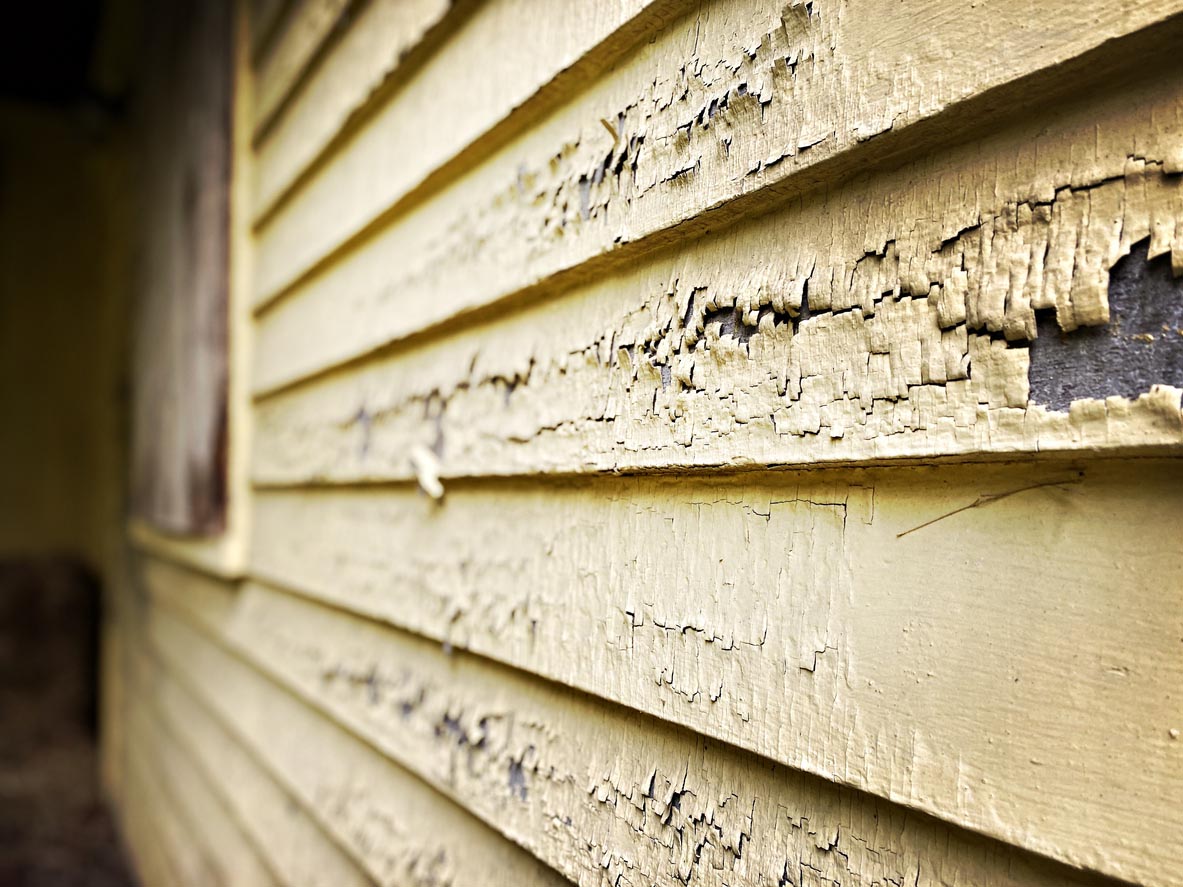
Asbestos Siding Removal Cost by Type of Siding Material
While it was once a revolutionary construction material, asbestos siding is now known to be a dangerous material that has been linked to deadly health issues when the fibers are inhaled. For homeowners considering removing their asbestos siding, one key factor that will affect the overall cost is the type of siding material.
| Type of Siding Removal | Asbestos Removal Cost per Square Foot (Materials and Labor) |
| Asbestos brick | $2 to $6 |
| Asbestos fiber cement | $7 to $9 |
| Asbestos stucco | $15 to $20 |
Asbestos Brick
Asbestos brick contains asbestos fibers mixed with cement or other binders. The asbestos makes the bricks durable and resistant to heat and fire. It’s difficult for this type of asbestos to be released into the air unless the bricks are ground to a fine powder. Since the risk of asbestos bricks releasing asbestos fibers into the air is minimal, many homeowners choose to leave the bricks in place. The cost to remove asbestos bricks ranges from $2 to $6 per square foot.
Asbestos Fiber Cement
The most common type of asbestos-based siding is asbestos fiber cement siding. Unlike today’s fiber cement siding that’s made with cellulose fiber, this early type of fiber cement was made with asbestos. Removing asbestos fiber cement siding is more dangerous than removing asbestos bricks, especially if the pieces are in bad shape and crumbling. Removing this type of siding can cost from $7 to $9 per square foot, depending on the condition of the siding.
Asbestos Stucco
The presence of asbestos stucco on a home can complicate the removal process. Since it’s an additional layer on top of the structure of the building, careful planning is necessary to avoid damage to the walls during removal. The removal process creates a lot of dust that can escape into the environment, which makes it one of the most dangerous types of asbestos removal. The time-consuming removal process involves spraying water on the stucco to keep the material wet and contain the asbestos. The cost to remove asbestos stucco runs from $15 to $20 per square foot.
Do I need asbestos siding removal?
Many homes built before 1980 contain asbestos in the siding material. Since asbestos can pose serious health risks, including mesothelioma and other asbestos-related diseases, it’s important for homeowners to determine if they need asbestos siding removal or encapsulation for their home. This decision can be based on three factors: the age of the home, if the home will be listed for sale, and if the homeowner wants to renovate.
Home Age
Homes built before the 1980s are more likely to have asbestos-containing materials, including siding, wiring, ducts, ceiling and floor tiles, shingles, and more. The age of the home plays a significant role in determining the presence of asbestos siding.
According to Michelle Whitmer, The Mesothelioma Center at Asbestos.com writer and asbestos expert who has been covering medical and environmental issues for over 14 years, “Homeowners should be aware of the risk of asbestos exposure lurking in older homes constructed before the 1980s. Asbestos was a common additive in construction materials before regulations were set in place to protect consumers.” As a result of the awareness surrounding how dangerous asbestos is, regulatory agencies around the world placed restrictions on the use of asbestos-containing materials. In the United States, the Environmental Protection Agency (EPA) banned nearly all new uses of asbestos in 1989.
Identifying the age of a home’s siding can provide some clues about the potential presence of asbestos. If a house was built before the 1980s and still has the original siding, chances are good that it contains asbestos. To confirm if a home has asbestos siding, it’s recommended to hire a licensed asbestos inspector. These pros know how to test for asbestos by taking samples and sending them to a lab for analysis without exposing homeowners to the dangerous fibers.
Home Sale
Many home buyers are cautious about purchasing a home with asbestos-containing materials due to the health and safety concerns. Homes with asbestos siding may be less desirable than those that don’t have asbestos siding. So while the removal cost may be significant, removing the siding can make the property more attractive to potential buyers and increase the overall value of the home.
In many locations, sellers may be required by law to disclose the presence of asbestos to potential buyers. While this disclosure may not deter buyers, the existence of asbestos siding could affect negotiations and the final sale price. Some buyers may even request that the asbestos siding be removed and replaced as a condition of the sale.
Home Renovation
Renovation projects that will disturb asbestos materials, such as drilling, cutting, or sanding, can release harmful asbestos fibers into the air. This poses a health risk to the homeowner, their family, and the contractors working on the project. Strict regulations exist in most areas for asbestos abatement during renovations that disturb asbestos materials. Since asbestos siding can deteriorate over time, the removal of the siding during renovations can eliminate the need for future maintenance and reduce the risk of asbestos exposure.
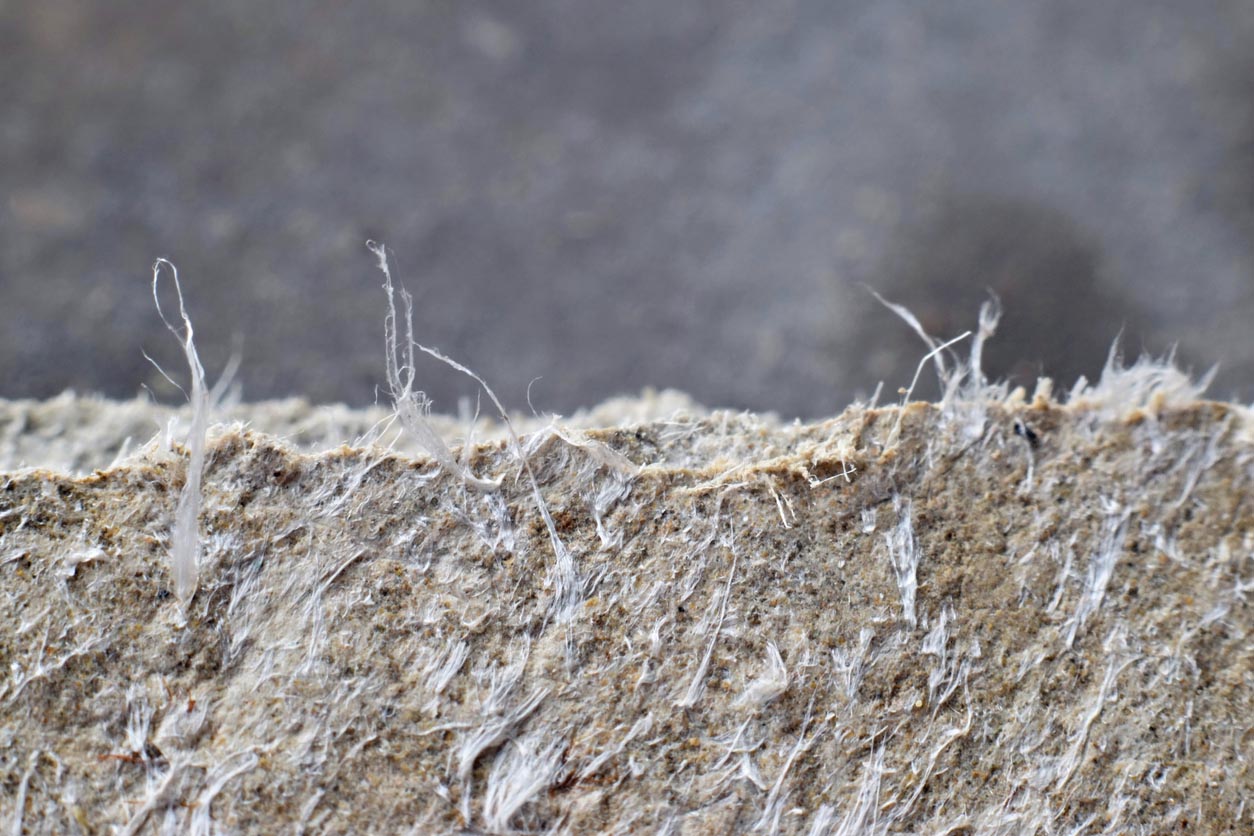
Asbestos Siding Removal: DIY vs. Hiring a Professional
While it may be tempting to take a DIY approach and learn how to remove asbestos siding to save on labor costs, there are serious risks to consider. Asbestos fibers can be released into the air during the removal process, putting the homeowner and their family at risk of serious health complications that include lung cancer and mesothelioma. Improper removal can lead to contamination of the surrounding area, which may require costly remediation down the line.
In fact, many municipalities prohibit the removal of asbestos materials by anyone who is not properly trained and licensed to handle the deadly material. There are several types of asbestos, and each has its own set of regulations for safe removal. Homeowners won’t know about these regulations and may not have access to proper protective equipment.
“Hiring licensed professionals to remove asbestos is the safest way to prevent contamination,” explains Marchese. “DIY removal could contaminate living or working space areas. When contamination occurs, it’s nearly impossible to contain the risk without professional assistance.”
Whitmer agrees: “Removing asbestos from your home yourself is not recommended because it is a carcinogen that causes several different types of cancer,” she says. “Do-it-yourself asbestos removal can release asbestos fibers throughout a home, leading to exposure among every family member. Hiring licensed asbestos abatement professionals is highly recommended to protect everyone living in the home. These professionals use extensive safety measures and precise tools to protect families from asbestos exposure.”
Hiring a professional asbestos removal company has many benefits. These professionals have the necessary training, equipment, and experience to know how to get rid of asbestos safely. They follow strict guidelines to minimize the risk of asbestos exposure and ensure correct disposal of the hazardous material. While hiring a professional will be more expensive, it can help homeowners have the assurance that that job will be done correctly and safely.
How to Save Money on Asbestos Siding Removal Cost
Asbestos siding removal can be an expensive investment, but there are several ways to save money on this important project.
- Get multiple quotes. Before committing to a contractor, homeowners can obtain quotes from at least three licensed asbestos removal professionals to make sure the price lines up with the budget.
- Consider partial removal. If the asbestos siding is in good condition and not posing an immediate health risk, homeowners may consider partial removal instead of full removal. This process removes only the damaged or deteriorating sections of siding, reducing the overall removal cost.
- Opt for encapsulation. In some cases, encapsulating asbestos siding with a sealant or protective coating may be a more cost-effective alternative to removal. Encapsulation can help contain asbestos fibers and extend the life of the siding without the need for full removal.
- Schedule during the offseason. Schedule asbestos siding removal during off-peak seasons when contractors may offer discounted rates or promotions. Planning ahead and booking removal services in advance can also help with getting better pricing.
- DIY preparation. While DIY removal of asbestos siding is not recommended because of safety concerns, homeowners can save money by preparing the site on their own. Clearing the area, removing obstacles, and disconnecting utilities can streamline the removal process.
- Take advantage of government programs. In some areas, there are government programs that offer financial assistance for asbestos removal. Homeowners will want to research to find out if they qualify for any programs.
- Combine removal with other renovations. If a homeowner is already planning a home renovation project, they will want to consider combining the asbestos removal with the renovation. This can save on costs by having the contractors work on multiple projects at the same time.
Questions to Ask About Asbestos Siding Removal
Asking the right questions when hiring a professional for asbestos siding removal is important for homeowners to make sure the job is done safely and efficiently.
- Are you licensed and certified to remove asbestos?
- Will you provide proof of insurance and bonding?
- What is your experience with asbestos siding removal?
- Can you provide references from previous clients?
- What is the estimated cost of the removal?
- Where is asbestos found in older homes like mine?
- Will my family and I have to relocate during the removal process?
- What safety precautions do you take to protect everyone in the home during the removal process?
- Will there be any disruptions to utilities during the removal process?
- How do you handle asbestos waste and ensure proper disposal?
- What measures do you take to contain asbestos fibers to prevent contamination?
- Can you provide documentation certifying that the asbestos siding has been properly removed and disposed of?
- Are there any post-removal precautions or recommendations I should be aware of?
- What warranties or guarantees do you offer on your work?
- Do you provide follow-up inspections or air quality tests after the removal?
- How can I leave a review of your work?
FAQs
Asbestos siding removal cost is a common concern for homeowners considering renovation projects. Some frequently asked questions pertain to sealing asbestos siding, what kind of potential health risks stem from asbestos exposure, and how to clean asbestos siding.
Q. Can you seal asbestos siding?
Sealing asbestos siding can be a cost-effective solution, but it’s not always recommended. Some siding is already too damaged to be an ideal candidate for sealing the asbestos. If the siding is in good condition, then sealing the asbestos properly through professional encapsulation is possible. It’s not a long-term solution, and the sealant will need to be reapplied down the road. Encapsulation is an option that should be completed by a licensed professional.
Q. What does asbestos do to humans?
Asbestos exposure can lead to serious and deadly health issues, including lung cancer, mesothelioma, and asbestosis. It’s also known to increase the risk of colon cancer and other cancers of the digestive system. These diseases often develop years or even decades after exposure to asbestos fibers, making prevention and early detection crucial.
“If you think you may have had asbestos exposure, seek medical attention promptly,” advises Marchese. “Discuss exposure history with healthcare providers for evaluation and follow-up care in case medical issues arise later. If there is still asbestos in your home or workplace, consult asbestos removal professionals to assess and address contamination risks.”
Q. Can I paint over asbestos?
Applying regular house paint over asbestos is not recommended as it will not prevent the fibers from being released if disturbed. Having a professional apply an encapsulating compound over the siding will bind the asbestos fibers together to prevent the material from escaping into the air.
Q. How do you clean asbestos siding?
The process of cleaning asbestos siding is best approached with caution to avoid disturbing asbestos fibers. Homeowners wearing protective equipment can use a gentle detergent and water solution with a soft brush or sponge to remove dirt and debris. It’s wise to avoid abrasive cleaners or power-washing, since these methods can release asbestos fibers into the air. If the siding is damaged or deteriorating, homeowners are advised to leave cleaning to professionals experienced in asbestos remediation.
Sources: Angi, HomeAdvisor, Fixr, HomeGuide

